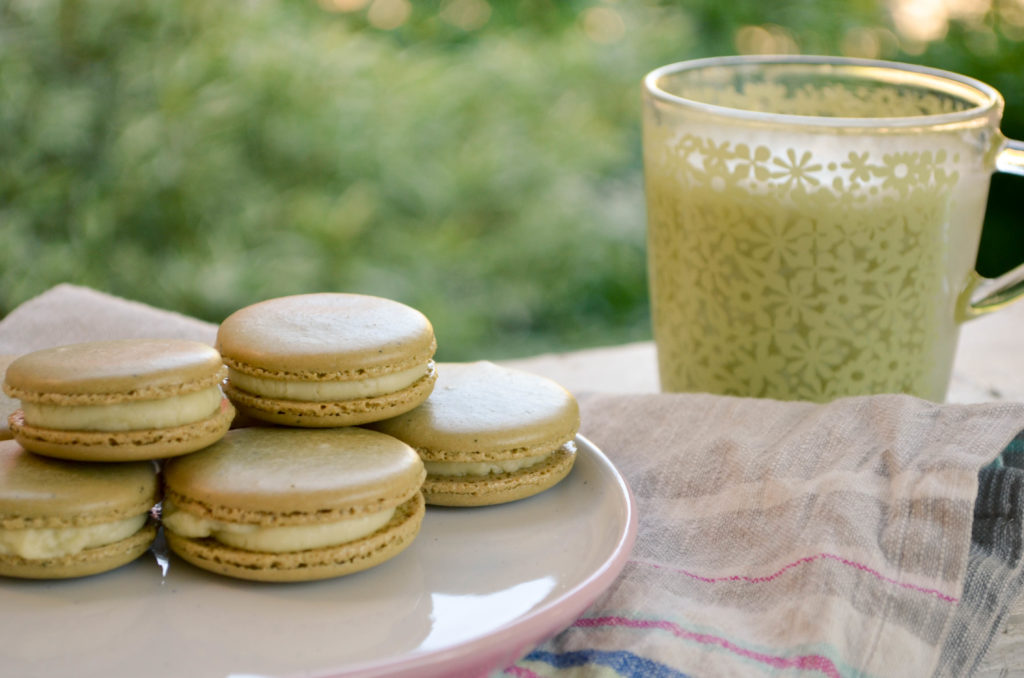
Where I live, in the Niagara Region of Ontario, Canada, we have very dry winters and incredibly humid summers. The dry winter months are great for making macaron, I’ve had them dried and ready to pop in the oven before I’ve had time to preheat, but even a clear, sunny summer day here can bring too much humidity for these finicky little cookies. After waiting 6+ hours and still getting cracked shells from a too wet batter the last time I made macarons, I endeavoured to develop a less moist version of my recipe for the summer months. Here it is in an exotic matcha green tea shell with a rich white chocolate ganache filling!
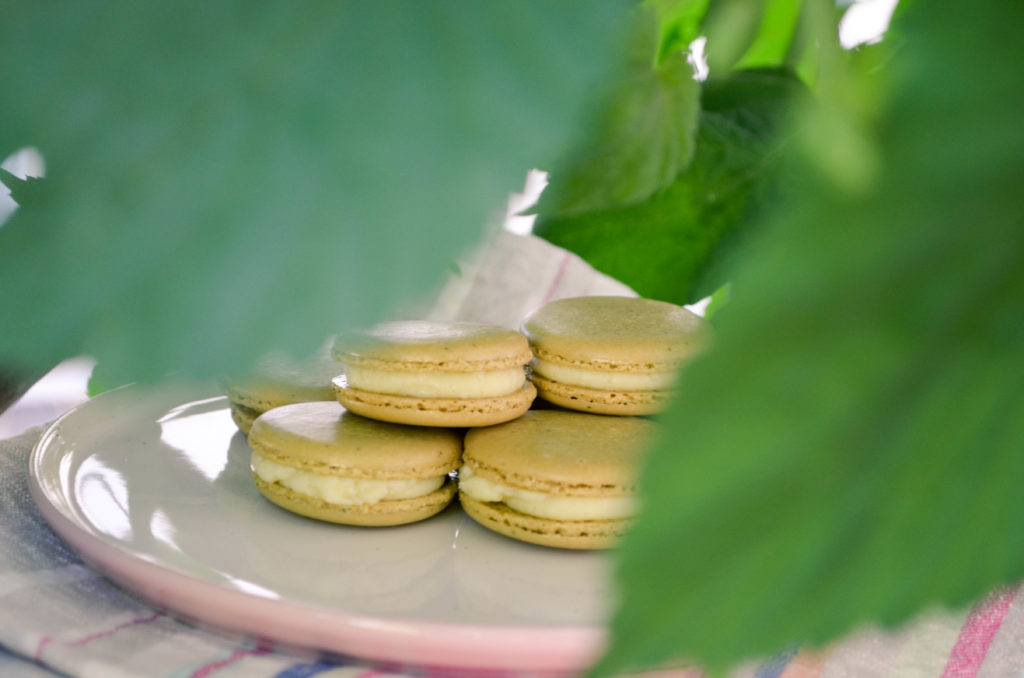
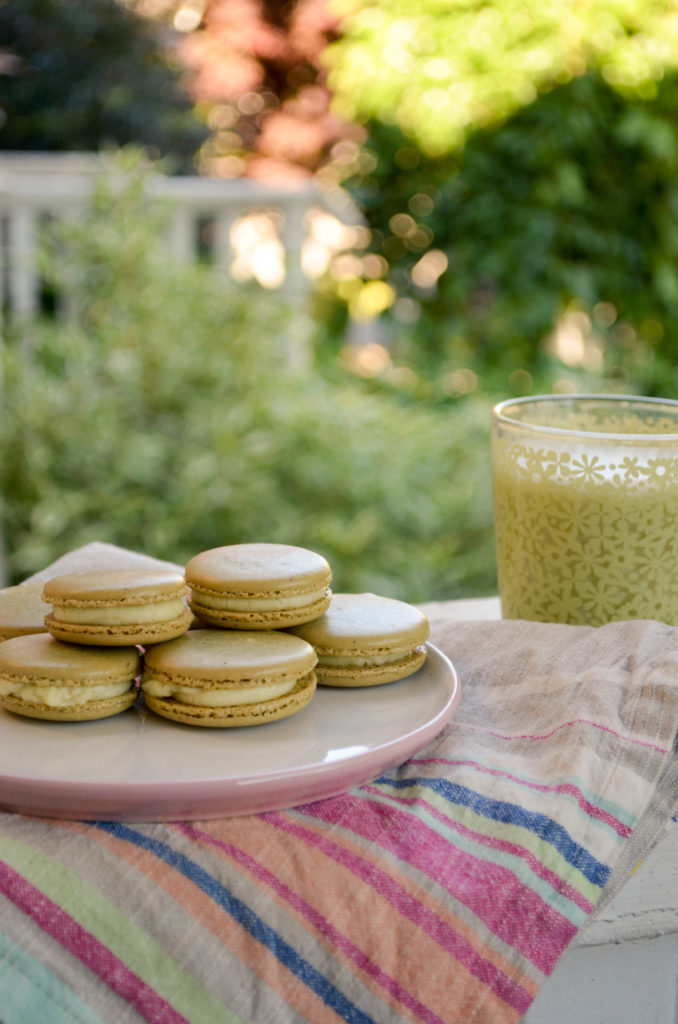
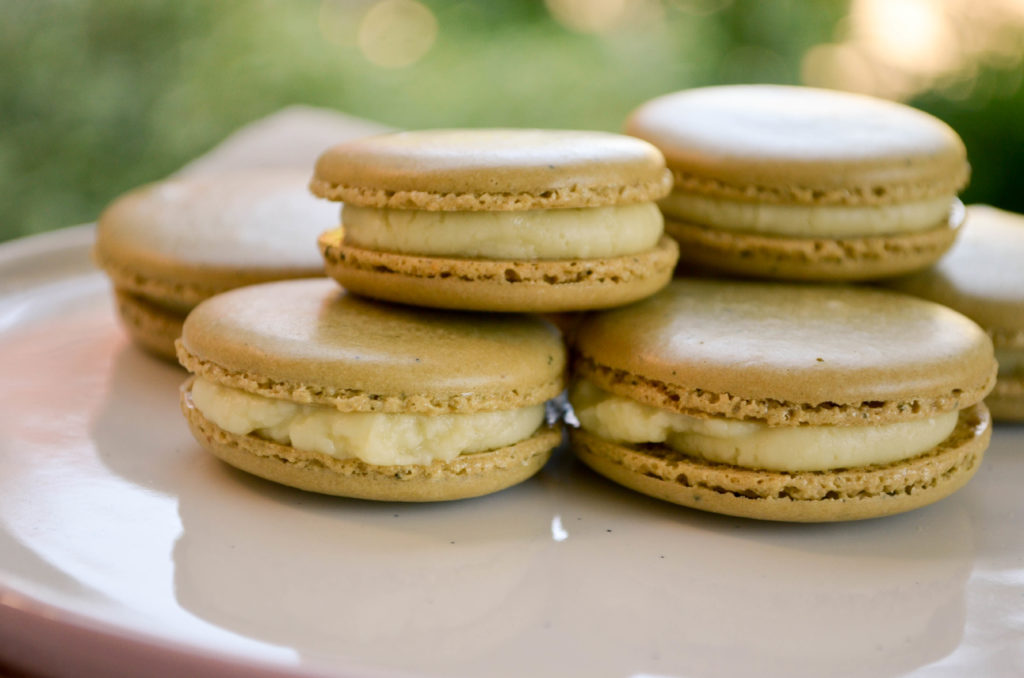
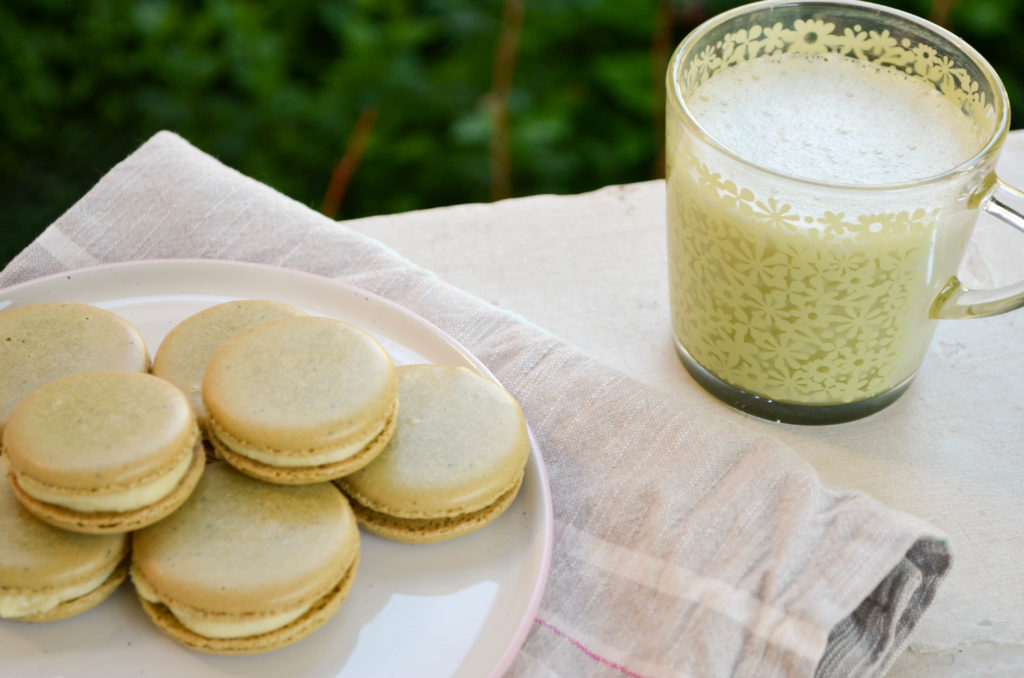
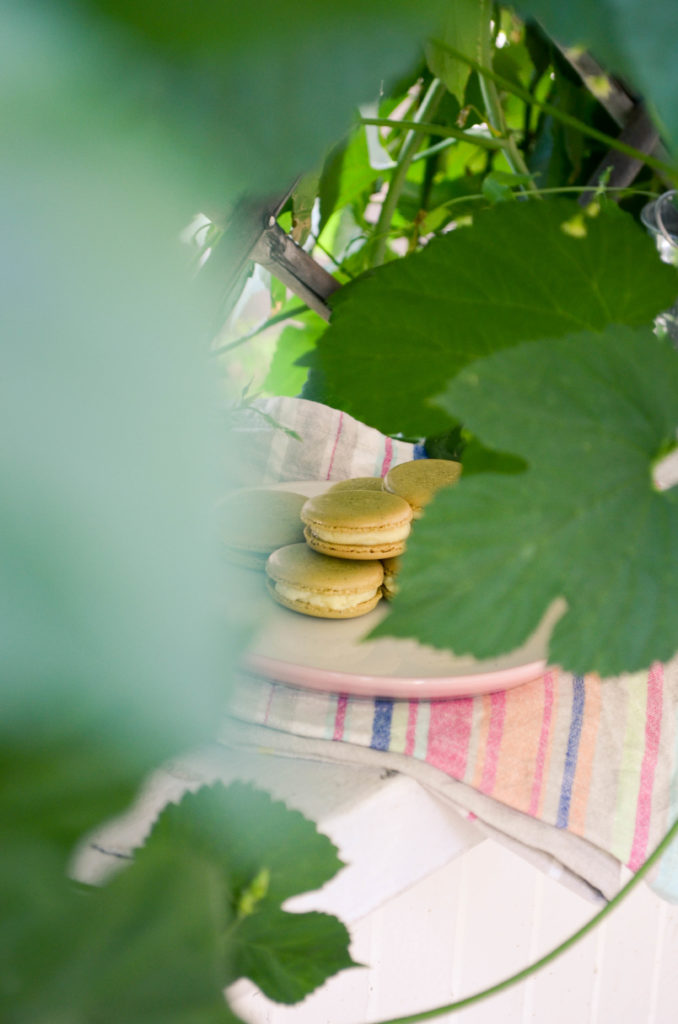
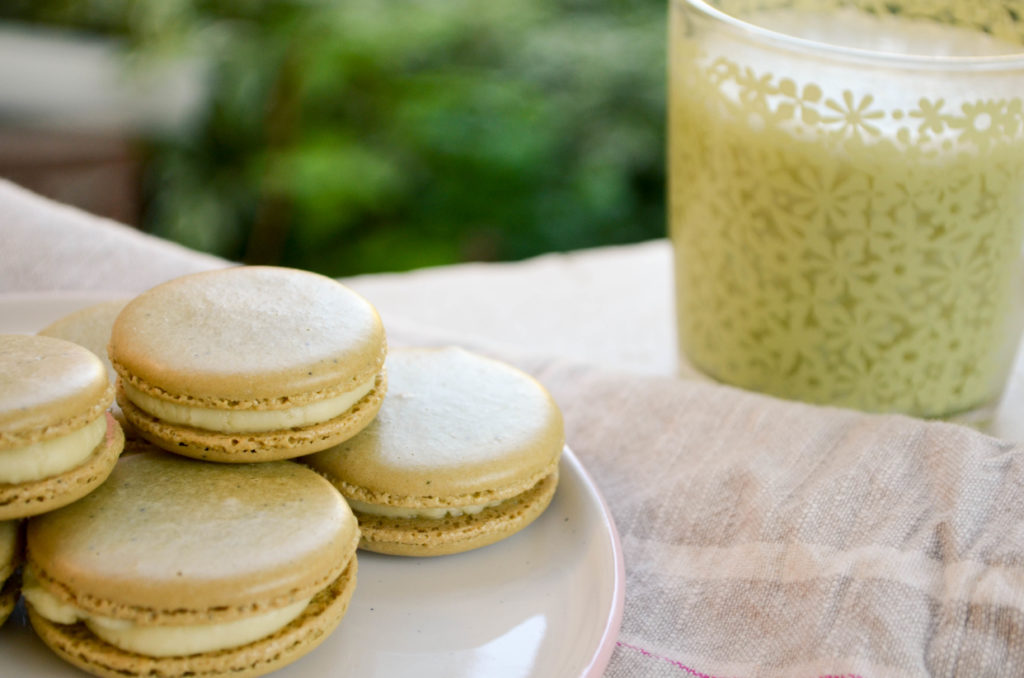
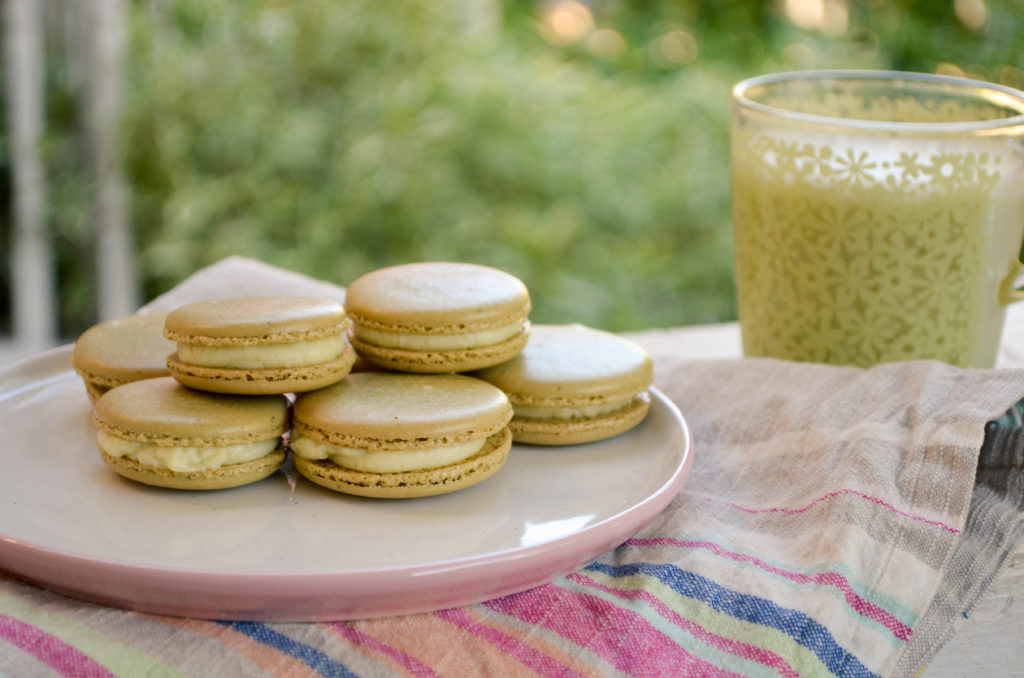
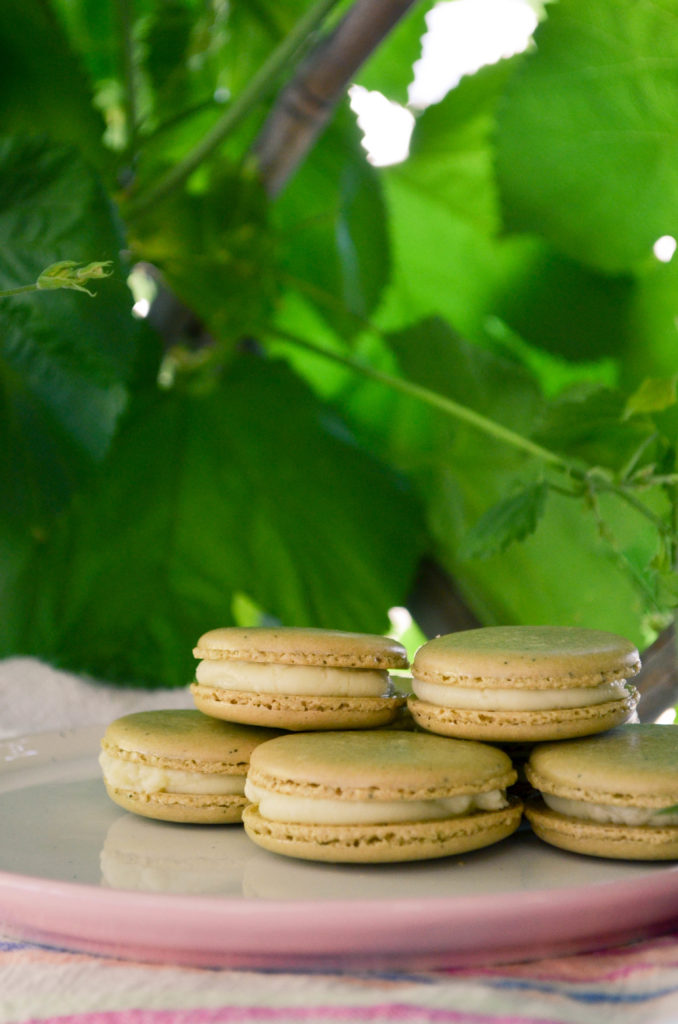
Ingredients
for the macaron shells
- ¾ cup ground almonds (as finely ground as you can find)
- 1 cup icing sugar
- 2 large egg whites, at room temperature
- 3 tbsp + 1 tsp sugar
- 1½ tsp matcha powder (I get mine here)
for the white chocolate ganache
- 6 oz (one package) white baking chocolate
- 2-4 tbsp whipping cream
Method
for the macaron shells
- Prepare your parchment sheets by drawing 1″ circles, ½” apart across the entire sheet (or using silicon baking mats with the circles already printed on them) and placing them on a large flat surface suitable for drying your batter, like a dining table. You will need 2-3 half sheet pan size pieces.
- Sift ground almonds, icing sugar and matcha powder together, twice. Set aside.
- In a large stainless steel mixing bowl, beat egg whites with a hand or stand mixer on high speed until you have a foam with no liquid remaining.
- Slowly add the sugar while continuing to beat the egg whites. Beat on high speed until the egg whites reach stiff peaks. You’ve made meringue!
- Fold your almond and icing sugar mixture into the meringue in two parts.
- Here’s the part that takes practice: it’s time for the macaronnage! With a spatula, spread the batter, with some force, against the side of the bowl. Then scoop it up by running the spatula along the side of the bowl again and try to flip it all over and sort-of lightly smack it back into the bottom of the bowl. Gather the batter up again and repeat 15 times. It takes some time to figure out the best way to do this, don’t be afraid to play around with it. When doing the macaronnage correctly, repeating more than 20 times can result in oily, blotchy macarons, but I’ve found that doing it incorrectly doesn’t count towards this limit. If you are doing it right, the batter will take on a noticeable and somewhat sudden change in consistency, this means you are about half-way to that limit. When finished, the batter should be thickened and drip slowly from the spatula. You will have to pipe it onto your baking sheets/mats and it won’t work if the batter is too runny. This is the technique that defines macarons, this is what makes mastery of them impressive.
- For perfectly round macarons, use a large, 0.4″ plain tip with a pastry bag, or do it the lazy way and cut a corner off a zip top bag for mostly round macarons. Twist (or don’t yet cut) the bag at the tip and place it, tip side down, in a tall glass. Fill with your batter and twist, close or clip the other end to help keep the messy batter moving in the right direction. Pipe the batter into the centre of the circles on your sheets/mats and stop before reaching the edges as the batter will spread out a bit.
- Once finished piping, carefully pick the sheets/mats up and drop them back on to the table from a height of a couple of inches. The theory is that this helps the cookies keep their round shape and form the little bubbles around the bottom (the pied) when you put them in the oven.
- Leave the cookies on the table, uncovered, for 15-30 minutes to dry (or more on a humid day). This is a good time to preheat your oven to 350°F. You will know the macarons are dry when they look smooth and are no longer sticky to the touch.
- Place an oven rack in the centre of your oven. Place a sheet of macarons on two stacked sheet pans (this will stop the bottoms from getting too hot, resulting in cracked macarons) and bake for about 15 minutes. Rotate the pan half way through baking. At this point, if you want to try to keep your cookies light in colour, place a second oven rack directly below the first and move your cookies down to it, then place a third sheet pan above the cookies on the higher rack to protect them from the heat above. It can be hard to tell when the macaron are done. I pull them out when the kitchen smells sweet and the cookies look crisp, have just started to brown, and don’t look blotchy in the middle.
- As soon as the parchment sheet/baking mat is cool enough to handle, take it out of the pan with all the cookies on top and place it on a cooling rack. The macarons will be too sticky to remove from the sheet/mat now; once cooled, they should peel off easily. I usually wait a few minutes for the pans to cool a bit and for the oven to come back to a steady temperature before moving the next sheet to the pans and baking the next round.
for the white chocolate ganache
- Fill your smallest saucepan with a couple inches of water and put it on the stove to simmer over medium-low heat.
- Chop up the white chocolate pieces and place them in a small stainless steal bowl that fits in the top of your saucepan but doesn’t touch the water.
- Warm 4 tbsp of cream up to a simmer. (I use a metal measuring cup on my gas stove top.)
- Place your bowl of chocolate in the top of the simmering saucepan and whisk until it just starts to melt. (This is called a double boiler and is used to gently melt the chocolate.) Be careful! The bowl can get hot and there will be steam coming from the saucepan.
- Remove the bowl from the saucepan and place on a heat-safe surface (a folded up tea towel does the trick). Pour the cream, starting with 2 tbsp and then 1 tablespoon at a time, into the chocolate and whisk to combine and melt the chocolate. White chocolate does not behave the same way as regular chocolate and can get too runny to work with if too much cream is added. You want it just loose enough to be able to whisk it for the next step. If your chocolate doesn’t seem to be melting enough, you can pop it back on the double boiler for a few seconds between cream additions.
- Whisk your ganache about 100 times until it’s smooth and shiny.
- Let cool slightly then pour into a zip top bag and continue cooling to room temperature. Once cooled, the ganache can be stored in the refrigerator and warmed back up to room temperature in a double boiler for use.
Once everything has cooled, snip the corner off your bag of ganache and pipe it onto half of your shells. Then place another similarly sized shell on top and gently press them together. Best stored in the refrigerator to keep the ganache firm.
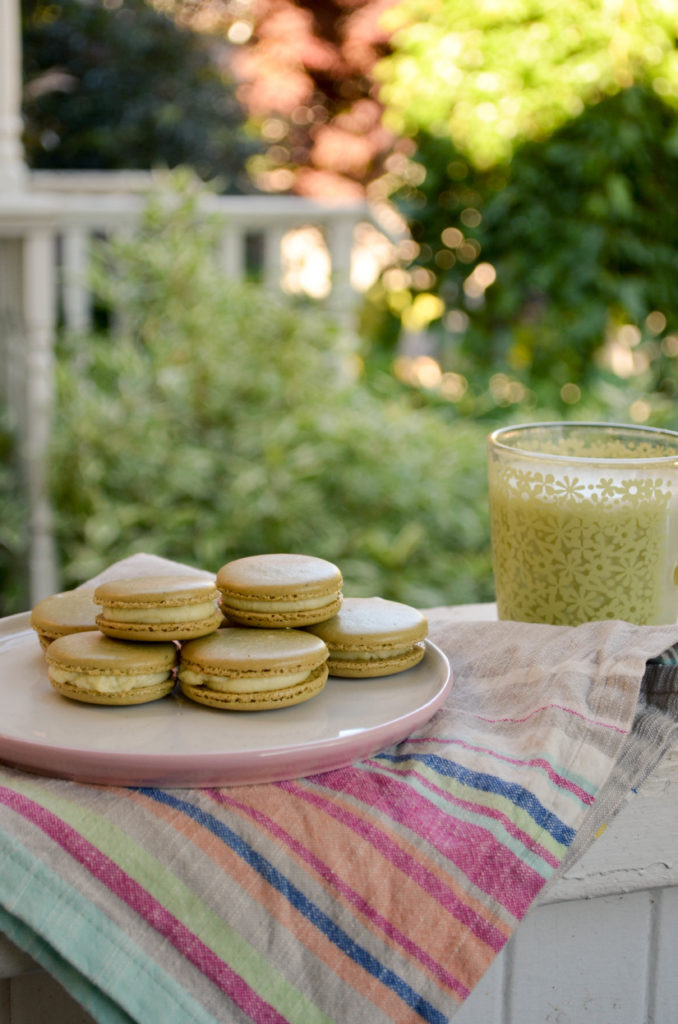
All photos by me.
